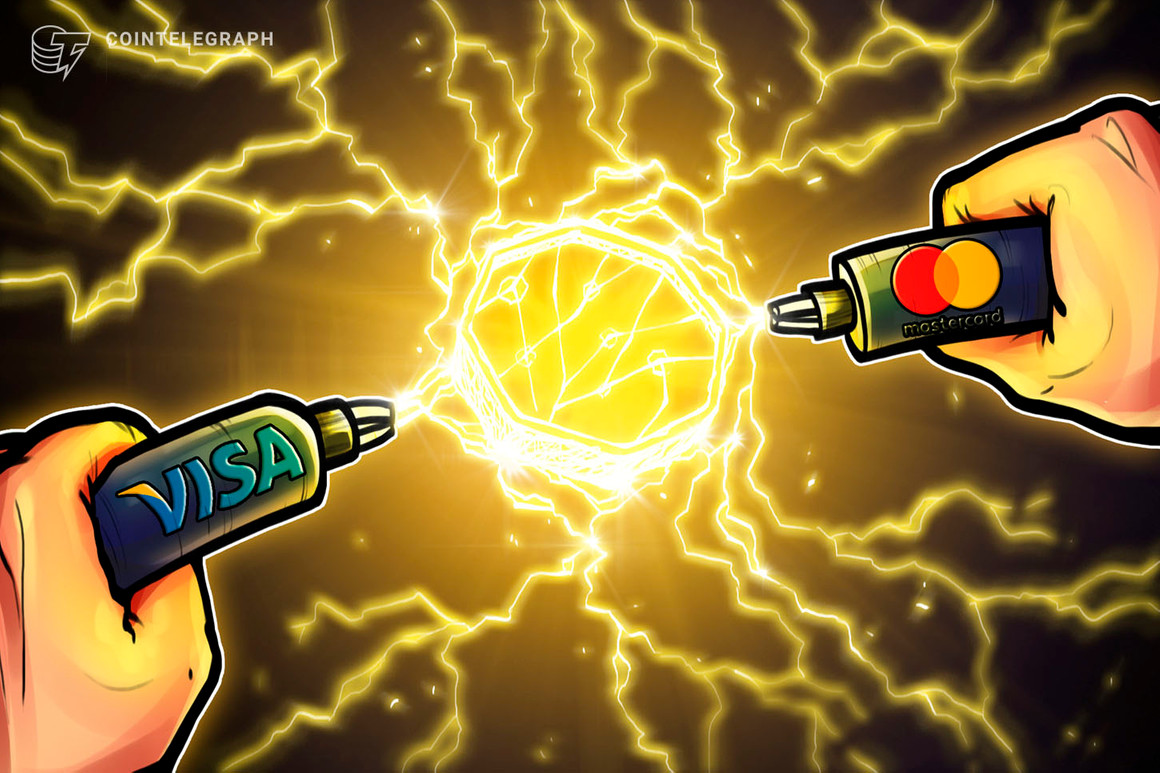Bitcoin (BTC) changed the world as a decentralized and non-governmental form of currency that can facilitate peer-to-peer (P2P) transactions that transcend national borders.
But, despite this functionality, Bitcoin’s role as a payment mechanism has been called into question due to its low transaction throughput.
The Bitcoin blockchain can handle up to seven transactions per second, which means that network demand has seen the average transaction fee on the network reach an all-time high above $62 during specific periods.
In order to address low throughput and high transaction fees, developers made the Lightning Network — a layer-2 scaling solution that allows for off-chain transactions.
The Lightning Network creates a P2P payment channel between two parties in a transaction. The channel “allows them to send an unlimited amount of transactions that are nearly instant as well as inexpensive. It acts as its own little ledger for users to pay for even smaller goods and services such as coffee without affecting the Bitcoin network.”
Users of the network lock in a certain amount of Bitcoin in order to create a channel. Once the BTC is locked, recipients can invoice amounts as they need.
To a certain extent, the network is seen as a solution to Bitcoin’s scalability problem, but its adoption has been somewhat slow. The network currently has 87,000 payment channels and 4,570 BTC worth over $111 million locked in, compared to the 19.1 million BTC in circulation, the market capitalization of which is over $460 billion.
Despite its slow adoption, the network has the potential to outcompete existing payment solutions.
Lightning Network’s transaction throughput
Payments giants like Visa and Mastercard are used to process payments worldwide. Mastercard’s network is estimated to process up to 5,000 transactions per second, making it far superior to Bitcoin’s seven per second.
Visa’s transaction throughput is even more impressive, being able to process up to 24,000 transactions per second. In a recent interview, Visa chief financial officer Vasant Prabhu said that the network can, in theory, handle up to 65,000 transactions per second.
The Lightning Network goes much further, however, processing up to one million transactions per second, making it the most efficient payment system in the world in terms of transaction throughput.
RACE OF THE RAILS ♂️
Bitcoin #Lightning payments vs #fiat contactless payments at the #Gibraltar Bakery.
£2.20 loaded up on both PoS.
WHO WINS?? ⚡️ ⚡️
@CoinCorner @CoinCornerMolly pic.twitter.com/b3ezy7FIeq
— Joe Hall (@JoeNakamoto) July 25, 2022
Cointelegraph reporter Joseph Hall does an impromptu test of the Lightning Network versus fiat contactless payments.
Speaking to Cointelegraph, Ovidiu Chirodea, CEO of Romanian cryptocurrency exchange Coinzix, noted that the network marks the next phase in the evolution of money. Per Chirodea, first, there was gold, which was a store of value but wasn’t a convenient medium of exchange, with fiat currency following up as a convenient medium of exchange.
Recent: Tornado Cash saga highlights legal issues affecting the crypto market
Bitcoin, Chirodea said, was an evolutionary step that created a new store of value, with the Lightning Network serving as a platform for it to also become a medium of exchange:
“Visa is charging businesses around 3% to process payments, so I think the Lighting Network is a game changer. Companies will increase their revenue by using it and that’s not something that you can ignore.”
He noted, however, that the network’s scalability “isn’t so great,” as users need to open a channel with each party and tie up BTC on it, which affects their liquidity. Per his words, tying up liquidity can be avoided “using other routes and other payment channels,” but the solution “isn’t very scalable as payments channels keep opening and closing.”
Thomas Perfumo, head of business operations and strategy…
Read More: cointelegraph.com









 Bitcoin
Bitcoin  Ethereum
Ethereum  Tether
Tether  Solana
Solana  XRP
XRP  Dogecoin
Dogecoin  USDC
USDC  Cardano
Cardano  Lido Staked Ether
Lido Staked Ether  Avalanche
Avalanche  TRON
TRON  Toncoin
Toncoin  Stellar
Stellar  Shiba Inu
Shiba Inu  Wrapped stETH
Wrapped stETH  Wrapped Bitcoin
Wrapped Bitcoin  Polkadot
Polkadot  Chainlink
Chainlink  Bitcoin Cash
Bitcoin Cash  WETH
WETH  Sui
Sui  Pepe
Pepe  NEAR Protocol
NEAR Protocol  LEO Token
LEO Token  Litecoin
Litecoin  Uniswap
Uniswap  Aptos
Aptos  Wrapped eETH
Wrapped eETH  Hedera
Hedera  Internet Computer
Internet Computer  USDS
USDS  Cronos
Cronos  Ethereum Classic
Ethereum Classic  POL (ex-MATIC)
POL (ex-MATIC)  Bittensor
Bittensor  Render
Render  Artificial Superintelligence Alliance
Artificial Superintelligence Alliance  Ethena USDe
Ethena USDe  Algorand
Algorand  Arbitrum
Arbitrum  Filecoin
Filecoin  Bonk
Bonk  Celestia
Celestia  Stacks
Stacks  Dai
Dai  Cosmos Hub
Cosmos Hub  WhiteBIT Coin
WhiteBIT Coin